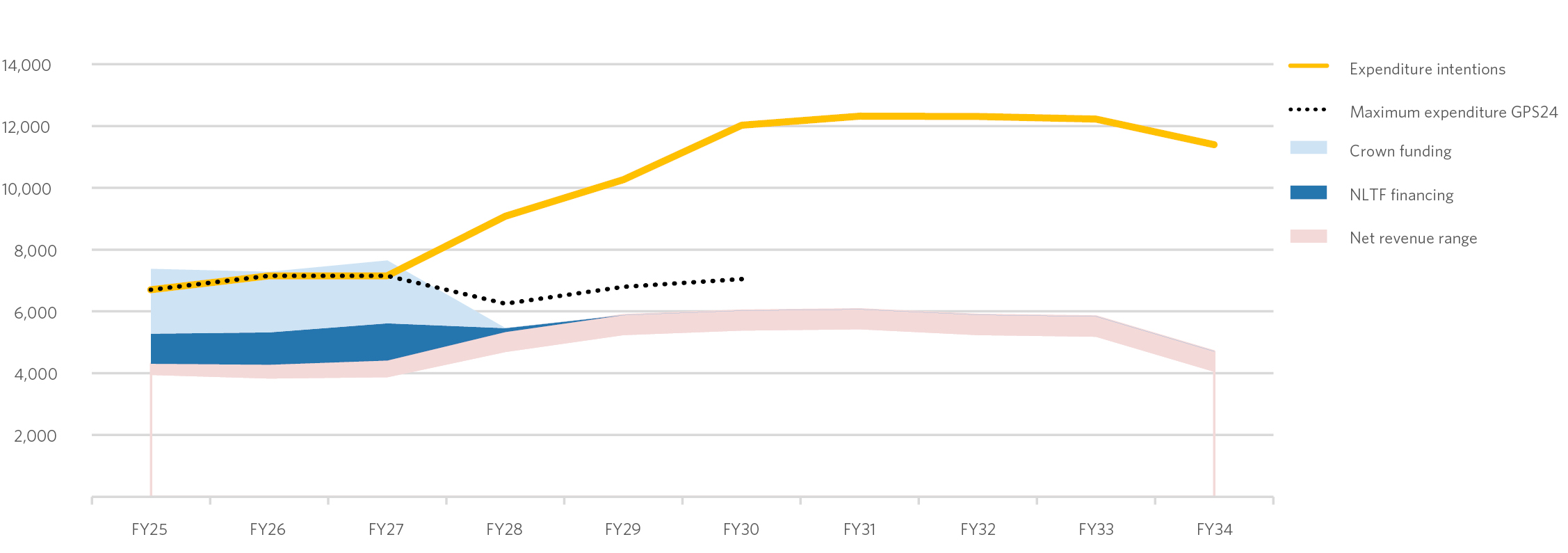Ongoing maintenance of our transport assets and the delivery of public transport services will continue to remain a significant focus for investment in the 2027- 30 NLTP, along with meeting the Government’s expectations for Roads of National Significance and Roads of Regional Significance, the Waitemata additional crossing and key public transport projects in Auckland and the lower North Island.
Significant regional activities identified in RLTPs that are expected to be considered for funding in the 2027-30 NLTP include:

The revenue forecast comprises fuel excise duty, road user charges, motor vehicle registry fees and track user charges provided by the Ministry of Transport and includes increases to MVR and FED/RUC set out in the GPS 2024. Revenue will vary from forecast (and potentially outside the indicated forecast range) depending on a range of factors, including economic conditions and performance.
Net revenue also includes:
Additional revenue from alternate funding sources (e.g. new tolls, time of use charge, value capture) is not included in the forecast but will be necessary to support expenditure intentions beyond FY27 (refer below).
Forecast expenditure is illustrated in two ways.
The maximum expenditure target set out in GPS 2024. This expenditure aligns with the confirmed sources of funding and financing set out in GPS 2024 and summarised above. Actual expenditure can vary, depending on a variety of factors impacting project delivery, for example resource consenting; resource availability; weather; sequencing of work by councils, etc.
A second line showing NZTA’s current view of investment intentions based on: the programme of works signalled in the GPS 2024; and delivery of the major transport projects (including Roads of National Significance, Northwest Rapid Transit Corridor and the Waitematā Harbour Connections project). To deliver this intended programme requires access to significant additional funding or financing, as illustrated by the gap between expenditure intentions and the current net revenue forecast.
The latter forecast is indicative only. In practice, investment will need to be prioritised based on the level of available funding and financing, as well as capacity for project delivery.